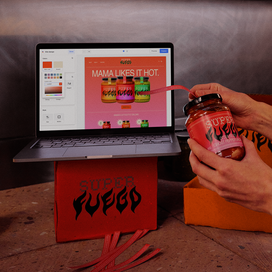Table of contents
This article was written in collaboration with our partner UPS.
More businesses are transitioning online and looking for new ways to provide customers at home with the same experiences they get in-store. That means shipping items that might not have been shipped before, and expanding sales beyond the reach of a traditional brick-and-mortar business.
Once you’ve set up your online store and promoted your eCommerce offerings, you’ll need to send your products to customers. From handling perishable goods to the best way to pack fragile items, we asked our shipping partner, UPS, to share their best advice for shipping anything and everything. Here’s how to get started.
How to ship frozen food
If you’re shipping food that is frozen and needs to remain that way, dry ice can help keep temperatures stable. Dry ice requires special handling, so be sure to read up on requirements.
-
Pack it: Use sturdy, insulated foam packaging. Any items that could melt, thaw, or contain liquid should be wrapped in plastic.
-
Ship it: Select a fast shipping option (overnight or two-day shipping) to minimize travel time. If possible, ship frozen items out earlier in the week to avoid a shipment sitting over the weekend.
-
Other considerations: Depending on the temperature that your food needs to remain, it may work well to add other coolants such as gel packs to packaging.
How to ship perishable food
If you’re shipping perishable foods like baked goods or produce, you’ll need to ensure that contents remain fresh. Similar to frozen food, perishable food will need to be kept at a controlled temperature, and should be properly sealed to avoid going stale.
-
Pack it: If you’re using dry ice, use sturdy, insulated foam packaging. You should also include padding such as bubble cushioning or foam wrap to minimize movement and avoid crushed or bruised items.
-
Ship it: Transit time should not exceed 30 hours, so utilize overnight or two-day shipping.
-
Other considerations: Adding gel packs can help keep food cool. The FDA has additional guidelines for transporting food, so be sure to do your research to ensure you’re properly prepared.
How to ship alcohol
First things first: To ship alcohol, you’ll need to obtain a license at the federal and state level. Once you have the proper licensing, ensure you’re up to date with alcohol-specific shipping contracts and state-to-state shipping statues.
-
Pack it: Choose a sturdy, corrugated box and be sure packaging and padding is tightly secured to keep bottles from breaking. Seal with pressure-sensitive packing tape.
-
Ship it: Monitor weather at your shipment’s destination. If temperatures are a concern, you may want to include expedited shipping, and ship earlier in the week to avoid packages sitting.
-
Other considerations: Read more on shipping beer, spirits, and wine (this resource from Wine Institute breaks down shipping requirements by state).
How to ship fragile items
To keep fragile items safe, you’ll need to take extra care when packing your shipment. Smaller eCommerce shipments are more likely to be rattled in transit, versus a larger wholesale shipment on a pallet from a manufacturer.
-
Pack it: Choose a strong corrugated box. New or with minimal damage is best. Use cushioning materials, and be sure to separate fragile components if possible. For extra protection, you can use UPS’s double (over) boxing method.
-
Ship it: Be sure to inspect fragile items for cracks, splinters, or chips, so nothing breaks in transit, and let customers know to handle their new package carefully. You can also add labels to ensure the carrier knows to take extra care.
How to ship bulky items
From golf clubs to skis or art, you might find yourself needing to ship bulky items.
-
Pack it: Find a sturdy box that can comfortably contain the item and appropriate padding. If you’re shipping artwork or a frame, be sure to protect the corners. If you’re shipping a very large item, you might need to use a crate.
-
Ship it: Shipping times may vary depending on the size of your shipment. Be sure to let your customer know ahead of time when to expect their delivery if things will take longer than usual.
If you’re shipping irregular items that require temperature control or extra handling, shipping may cost more. You’ll need to determine if you plan to pay for shipping fees or pass the cost along to your customer. Either way, shipping costs should be factored into the total cost of your product.
UPS is here to help
Whatever you ship, how it arrives reflects directly on your brand, which ultimately affects your bottom line. Let UPS help with all your shipping needs this holiday season and beyond.
Through Square, you can buy and print UPS shipping labels, plus you have access to discounts on domestic and international shipping, including up to 48% off UPS® Ground shipments and up to 62% on daily rates for UPS 2nd Day Air® service on eligible packages. †
If you don’t have a UPS account, it’s easy to set one up. Simply go to your shipping settings in your online store and click “Create account” under the UPS logo.
† Rates are limited to shipping from the continental U.S. only. These rates and discounts exclude shipment origins from Hawaii, Puerto Rico, and Alaska. Rates and any applicable discounts are subject to change at any time without notice.
![]()











